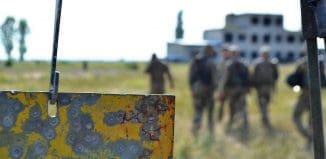Smartphone-Based Tech for Battlefield
This post is also available in:  עברית (Hebrew)
עברית (Hebrew)
The sound of gunshots, explosions, and blasts at the battlefield don’t just prevent soldiers from hearing their commanding officer, they also reduce their overall awareness. That is why soldiers often wear in-ear earphones that electronically protect their hearing at the battlefield. Determining where enemy shots are coming from, however, can be a challenge with such systems. The conventional earphones (Tactical Communication and Protective Systems – TCAPS) typically incorporate tiny microphones both inside and outside each of the wearer’s ear canals. These mics allow other soldiers’ voices to pass through unfettered, but automatically switch on an electronic filter when they detect loud noises such as the firing of the user’s own weapon. This is vitally important information, as it lets soldiers know not only the direction in which they should return fire, but also where they should take shelter.
On the other hand, they somewhat compromise situational awareness, though, as they make it difficult to hear where enemy gunfire is originating.
That’s where an experimental new system developed at the French-German Research Institute of Saint-Louis comes in. It’s based around the fact that modern combat weapons produce two waves when they fire – there’s an initial supersonic shock wave that propagates in a cone shape out in front of the bullet, closely followed by a muzzle wave which radiates spherically in all directions from the firearm itself.
Utilizing the mics inside the ear canals, the new system is able to measure the time difference between when the two waves arrive at each of the soldier’s ears. That data is transmitted by Bluetooth to an app on their smartphone – it utilizes an algorithm to determine the direction of arrival of the waves, and thus the direction in which the shooter is located, which is displayed on the screen.
“If it’s a smartphone with a good processor, the computation time to get the complete trajectory is about half a second,” says lead scientist Sébastien Hengy.
The technology has so far been field-tested on TCAPS mics placed head-distance apart, with plans calling for it to be tested on an artificial head later this year, according to newatlas.com.





























